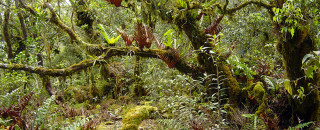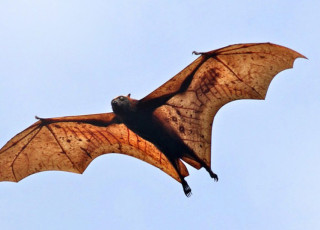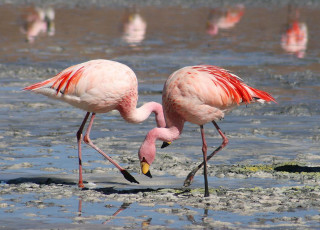Why Oceanic Islands Fascinate Us – Luzon Island, Part I
By Michael Mozdy
Judging from his wild, white whiskers, his welcoming demeanor, and the vintage Western wooden desk in his office, you might peg Eric Rickart as a cowboy-become-scientist. But while he’s certainly at home in the Great Basin leading field studies of regional mammals, he’s got more than his fair share of wanderlust for exotic tropical locales.

For good reason: 30 years of explorations have given science a new understanding and appreciation for the biodiversity in a specific wild place. He and his coauthors, Lawrence Heaney and Danilo Balete, just published what is sure to be known as the guide, called The Mammals of Luzon. Over the past 15 years, they discovered two new genera and nineteen new species of mammals from Luzon Island.
Luzon, in Southeast Asia, is the largest island in the Philippines and home to the capital, Manilla. Nearly 50 million people live there, but it’s about the size of Indiana. Think about squeezing the population from the entire U.S. west coast – California, Oregon and Washington – into Indiana, and you’ve got Luzon. So what is it that draws Rickart to this exotic locale – the weather, the lush mountains and valleys, the ocean, the mai tais??
All of the above (well, I’m not sure about the mai tais). Rickart is interested in biogeography, or the distribution of species in geographic space and over geological time. Luzon, as it turns out, is the perfect storm of unique geographic features.
First, it’s turbulent.
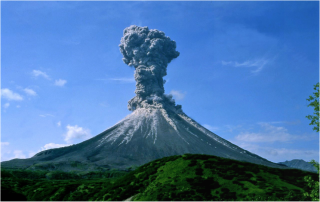
An oceanographer will tell that the ocean floor around Luzon is a fantasy land of rift zones, trenches, and odd features. In fact, there are subduction zones on both the west side and the east side of the island. For laypeople, that means that pieces of the earth’s crust are being pulled down in the mantle, resulting in lots of volcanoes… 25 of them on Luzon alone! This makes the island more seismically active than anywhere in the continental U.S.
Second, typhoons live here.
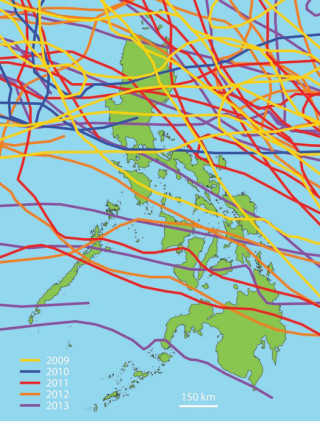
The track of typhooons over the Philippines, 2009-2013
We call them hurricanes, but whatever they’re called, violent winds, rains, storm surges, and floods rip through the island regularly. It’s so regular that “storm forests” of permanently stunted trees with twisted branches, and with many fallen trees and limbs are a natural feature of the island.
Third, it’s tropical.
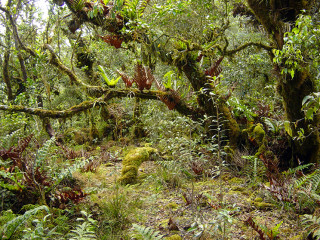
Mai tais, right? Well, not everywhere – when you combine a tropical latitude with the volcanoes, you get some very interesting high altitude ecosystems. Unlike Utah, the variation between seasons just doesn’t exist. It’s relatively warm and wet all year long. As you gain altitude, the air gets thinner and is less able to hold moisture. So Luzon has clouds that permanently form around the tops of their volcanic mountains – called cloud forests or mossy forests – and this is a supremely wet climate where you can have up to five meters (almost 200 inches) of rainfall a year! Unique flora and fauna have evolved in these unique environments.
Fourth, humans have pillaged.
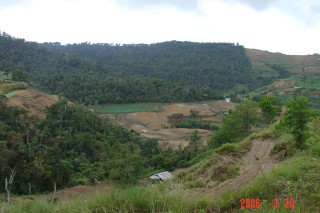
Not to malign Filipinos. Spain ruled here for 300 years, then the islands were a U.S. colony (later commonwealth) from 1901 until the end of World War II, which brought huge devastation to the country. But whether in war or peace, the natural spaces on the island have been radically altered. Natural habitat on Luzon is tropical forest, and from about 1955 to 2000, total forest cover declined from roughly 55% to 20% of the total island area; slightly more than 2 million hectares. Most of the remaining forest is in the highlands above 1000 m elevation, and much of this is heavily disturbed.
Fifth, it’s isolated.
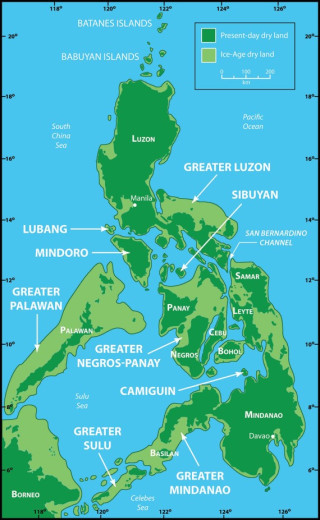
Dark green represents land levels today, light green is during last ice age. It remained isolated even with low ocean levels.
While Luzon isn’t far from mainland Asia and the rest of the Philippines, the ocean channels around the island are super deep. They are so deep, in fact, that the low waters of the recent ice ages (the most recent some 20,000 years ago) didn’t connect the Philippines to the Asian mainland even though other areas like Borneo, Java, and Sumatra were connected. This means that many of the things that exist here don’t exist elsewhere because they’ve evolved in isolation.
Maybe that gives you a peek into why Rickart, as someone who studies biogeography, thinks Luzon is pretty cool. If you, like him, wonder what types of mammals can exist in these turbulent, often violent, highly disturbed, wet, and harsh environments, read Tougher than They Look: Luzon Island, Part II to see some of them.
Michael Mozdy is a Digital Science Writer for The Natural History Museum of Utah, a part of the University of Utah in Salt Lake City. Our mission is to illuminate the natural world and the place of humans within it. In addition to housing outstanding exhibits for the public, NHMU is a research museum. Learn more.
